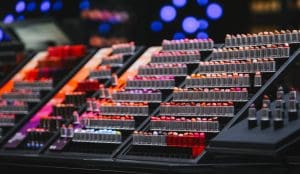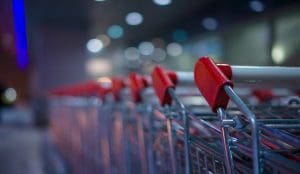Has COVID Made Bricks-and-Mortar Stores a Thing of the Past?
Post-pandemic, has the future of bricks-and-mortar stores changed? Will traditional retail rebound, or is the future all online?
In countries all over the world, COVID meant rows of shuttered shops. With months of lockdowns and customers unwilling to venture into a world of coughs and sneezes, many retail stores simply gave up; sold their surplus stock online and died a slow, quiet death. This is reflected here in New Zealand, with empty stores starkly visible in malls and main streets.
The push has been to go online. It is amazing what consumers buy online; from fruit and vegetables through to sportswear, swimsuits, underwear, and furniture. Online retailers have exploited this too, allowing deliver-try-and-return packages for packs of clothing items, and even created guaranteed ten-minute-delivery services for basic household groceries in some countries. Global online retailers met that temporary gap in the COVID-influenced market. But it’s not forever.
But, will traditional retail recover?
If trends overseas are to be believed, retail is here to stay. In the US, retailers have opened more than twice as many outlets as closed last year, and that’s even with the supply chain disruptions and COVID chaos. Somewhat ironically, auto parts retail stores are one of the biggest winners, as people converted to working-from-home or hybrid working models, moved to the suburbs, and purchased vehicles. While footfall for retailers is below pre-pandemic levels, it will rise again.
The time to create safe, inviting, and real-life shops is now. Landlords would rather have discounted rents and someone occupying spaces rather than sitting idle. People (even the introverts) are social creatures, we all need some level of personal interaction. Shopping can help to meet these needs.
There are also certain items that people prefer to buy in person. Fresh fruit and vegetables need to be eyeballed (or, subtly squeezed) to ascertain their quality. Shoes need to be tried on to ensure they fit comfortably. Sports gear needs to be brandished in an appropriate manner—after all, how do you know which bat you can hit a six with, or which racket you can smash an ace with in tennis?
How Can Retailers Get People in Store Again?
- It’s time to capitalise on ‘shopping local’. People purchased online from overseas when they were locked away; now, they can get out and about and support their community by buying local. The supply chain for NZ-made products can be guaranteed (unlike large fast-fashion brands), customers can see and feel the quality, and they are supporting Kiwi families. Make sure they know it.
- Differentiate your offering, whether it’s by strengthening a brand, having a regional focus, offering next-level after sales service, or capitalising on history and reputation. What is the purpose of your brand, and should your value proposition change to match an evolving customer?
- Health and safety measures need to be increased. Many people are suffering a form of PTSD; where someone gets too close while we shop, or coughs, it can make them feel nervous. Having good flow and plenty of space for customers to move around can help to minimise the stress. Also think about:
- Shopping baskets: No-one wants to touch a basket that some potential carrier pigeon of disease has sweated all over. Have plenty of baskets available, and either offer a sanitising spray, or get staff to wipe down the baskets.
- No-touch displays: Scan in a QR code or pay without exchanging cash or cards, and display this information clearly. Stands like these card holders make this information prominent and don’t need any touching to access.
- Cough/ sneeze guards: These make people feel safer, with a physical barrier between employees and customers.
- Spray bottles: Plenty of spray bottlers with some form of sanitiser can be used by staff or distributed around the store for use by customers.
- Physical barriers can help form orderly queues and avoid crowding. Also, think about one-way aisles to avoid customers crossing paths, and less inventory and clutter.
- Have your customers changed? It’s likely they have. There’s definitely more of an environmental focus, with people buying from their neighbourhood stores instead of the trek to a mall, and more of a quest for authentic products Customers are also pushing for more sustainability and ethical options. If they have changed, it’s time you do too.
- Bridge the online and real-life. QR codes in-store link to an online catalogue where customers can see the full range of colours and styles, or menu. Offer contact-less payments via Apple or Google payment options. A good example of this is Glassons, who have aligned their search functions with the in-store experience.
Store designs are embracing natural materials, with longevity as part of the design. Consider scents that are not overwhelming; Peter Alexander’s fragranced candle scents are immediately recognizable from many shops away. Lemongrass helps to neutralise bad smells and have antibacterial properties, and there are so many options. However, don’t over-do it, as strong or unpleasant scents can cause headaches or be very off-putting.
It’s important to note that some people don’t care. They’ll still go shopping, they won’t wear masks, and their habits won’t have changed. But, your store needs to adapt for those who do care. COVID has changed every aspect of our lives, and retailers need to adjust to make everyone comfortable and happy in their physical stores.




